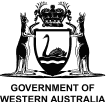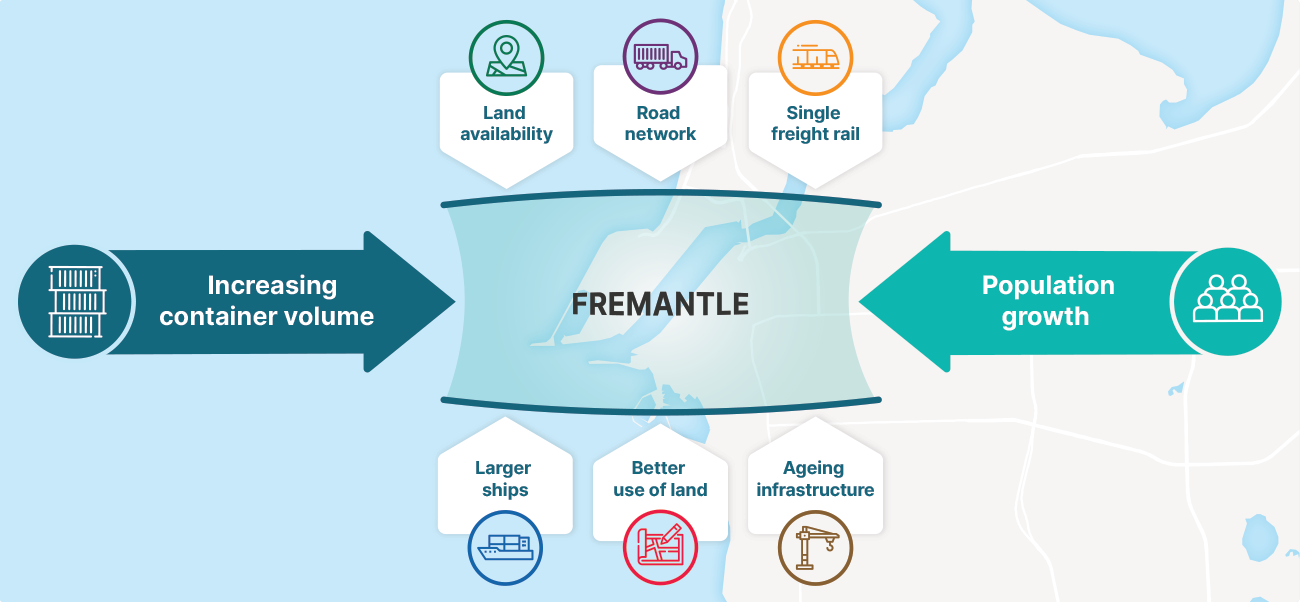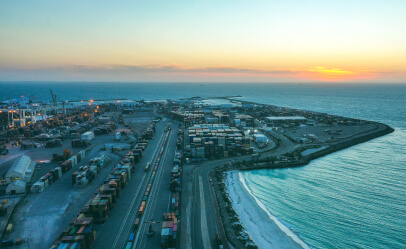Fremantle Port has served WA well for more than 120 years.
But its urban location means the port and connecting road and rail network face significant constraints – many of which can’t be viably solved even through major upgrades.
WA has experienced an almost five-fold increase in container trade over the past 30 years, and its forecast to approximately double over the next three decades. This is mainly driven by population growth.
When container trade becomes inefficient, the cost of moving goods rises, leading to higher prices for everyday goods, an increased risk of shortages, and bottlenecks that limit our lifestyle and economy.
Large and critical infrastructure takes time to develop. By planning now, we can have the new port and supply chain network ready for a transition by the late 2030s, and ensure our supply chain remains efficient and reliable to support WA’s container trade for another 100 years.
Issues facing Fremantle Port
Why Kwinana is the answer
Westport undertook a detailed 3-year analysis to determine the suitability of multiple locations to support WA’s future long-term container port needs, with the Kwinana Industrial Area identified as the most suitable location for a new container port.
- Existing port: Kwinana is home to the Outer Harbour – working port facilities which already receive 2-3 ships daily. Moving container trade to Kwinana would add about one ship per day.
- Proximity to Perth: Kwinana is in the Perth metropolitan region, allowing for cost-effective container distribution.
- Connectivity: Existing road and freight rail connections in the area can be upgraded to create a more efficient and modern supply chain that will also increase the number of containers on rail.
- Industrial land: New industrial land surrounding Kwinana will enable co-location of port services and heavy industrial uses, with ease of access to critical supply chain infrastructure.
- Strategic alignment: Moving container trade to Kwinana aligns with a range of State and Federal Government strategic objectives and programs, including development of the Global Advanced Industries Hub, redevelopment of the Kwinana Bulk Terminal and the Future of Fremantle.
- Catalyse growth: A new container port in Kwinana will catalyse growth of the Kwinana Industrial Area and broader Western Trade Coast, improving road connections, efficiency and collaboration across WA’s major industries in the region.
Upgrading Fremantle vs moving to Kwinana
Three options were evaluated to determine when and how container trade should transition to Kwinana:
- Operate 2 container ports at once for a period of 10 to 12 years.
- Invest in Fremantle to extend its capacity until the late 2040s, following which container trade would transition to Kwinana.
- Invest in developing Kwinana earlier and transition once, in the late 2030s, before Fremantle requires significant asset renewal.
A transition to Kwinana in the late 2030s would achieve the best value for WA. It would reduce overall infrastructure and development costs by avoiding expensive and short-lived upgrades to Fremantle Port and improving the entire port and supply chain ecosystem earlier.
Transitioning from Fremantle port to Westport















